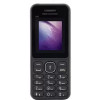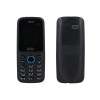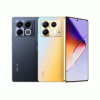With an Intel Xeon (quad core) processor, you can run any type of program you want. Multitasking is simple. The Xeon processor is compatible with hyper-threading technology. This allows two threads to run at the same time on each of the four cores. Performance is enhanced significantly with this type of technology.
This Mac Pro also features a dual-link DVI port and two Mini Display Ports outlets. The extra outlet allows the user to connect the desktop to an extra display. You can connect your Mac desktop to two displays at the same time without a second graphics card. The graphics card is an ATI Radeon HD (5570) card with 1 GB of memory. There is enough room for an extra graphics card if you need two of them. Think of all the movies you can watch and games you can play with this kind of graphics power. The MD772LL/A is the best choice for a multimedia desktop.
WHY SHOULD I GET THIS DESKTOP?
Now, talking about how the new MacBook Pro feels to use brings us to the tiny elephant in the room: the Touch Bar with Touch ID. It's a Retina (read: OLED) touch display underneath a matte surface, and that's key: it means way less smudging on a screen you're supposed to be touching all the time.
And if you're wondering how this little screen performs under direct light, the answer is – like any matte screen – not very well. But it's not as if the screen's content is indiscernible under such conditions – there's just a blatant difference between its look under direct and indirect light.
As you'd expect from Apple, the way the Touch Bar works is stupid simple. For one, in general use, the Touch Bar just replicates the media-first functions you're used to from previous MacBooks.
But, when you enter an app supported by the Touch Bar directly – like most Apple-made apps and some third parties, like Adobe Photoshop - you're presented with an app-specific icon toward the left of the Touch Bar. Pressing this summons a series of app-specific functions.

For instance, when using Messages, this icon renders as a smiley face, offering you the breadth of emojis you're familiar with on your iPhone. It even remembers your most-used emojis if you're using Messages on connected iOS devices via the same Apple ID.
Opening the Maps app introduces a directional arrow icon, which when pressed presents a series of specific commands, like walking, public transit and driving directions, or specific types of locations of interest to home in on.
All told, the Touch Bar works as seamlessly as you'd expect from the company: Apple wrote the playbook on touch devices, practically.
Regardless, that still doesn't make the Touch Bar hugely useful – we're having a hard time seeing anything that the Touch Bar can do vastly better or more easily than the MacBook Pro's much-improved keyboard and trackpad.
DESIGN
At first glance, not much has changed about the MacBook Pro's design. The profile or silhouette generally remains unchanged, save for finally (sadly) losing the illuminated Apple logo on its lid in favor of chrome. Take a closer look though and you'll see that nearly everything has changed. The 13-inch and 15-inch versions of the new MacBook Pro are 17% and 14% thinner than their predecessors, respectively – to the tune of a 14.9mm-thin 13-incher and a 15.5mm-thin 15-incher.
Naturally, with a thinner chassis comes lighter weight. The 13-inch version weighs just three pounds (1.37kg), nearly half a pound lighter than the previous version, while the 15-inch model hits the scale at four pounds (1.83kg), also shaving off nearly half
As for the keyboard, Apple claims its second-generation butterfly hinges vastly improve the typing experience from that on the 12-inch MacBook. Having recently taken the latest 12-inch MacBook for a test drive, we can attest to these improvements. Travel is deeper, and feedback upon releasing your fingers from a key is punchier. Frankly, this is what the first iteration of the new MacBook keyboard should have been – of course, that's easy to say.

The Force Touch trackpad has also been hugely improved. For one, the thing is damn enormous – twice as spacious as that on the previous model. This is the kind of trackpad we've wanted for a long time on MacBooks, and we finally have it. Plus, activating Force Touch functions, like word lookups, requires much less, well, force than before.







